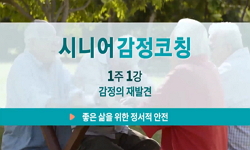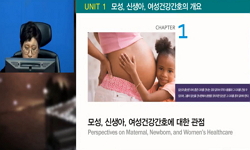Introduction: Apathy was found in patients with disorders seemingly unrelated with depression such as dementias, stroke, Parkinson`s disease, Alzheimer`s disease, and schizophrenia. As apathy is common in depressive patients and depressive patients wi...
http://chineseinput.net/에서 pinyin(병음)방식으로 중국어를 변환할 수 있습니다.
변환된 중국어를 복사하여 사용하시면 됩니다.
- 中文 을 입력하시려면 zhongwen을 입력하시고 space를누르시면됩니다.
- 北京 을 입력하시려면 beijing을 입력하시고 space를 누르시면 됩니다.

정신과 외래 환자에서 우울증상과 무감동의 관계 = Relationship between Depression and Apathy in Outpatients with Depressive Disorder
한글로보기https://www.riss.kr/link?id=A82580822
- 저자
- 발행기관
- 학술지명
- 권호사항
-
발행연도
2009
-
작성언어
-
- 주제어
-
KDC
500
-
등재정보
KCI등재후보
-
자료형태
학술저널
-
수록면
39-46(8쪽)
- 제공처
-
0
상세조회 -
0
다운로드
부가정보
다국어 초록 (Multilingual Abstract)
Introduction: Apathy was found in patients with disorders seemingly unrelated with depression such as dementias, stroke, Parkinson`s disease, Alzheimer`s disease, and schizophrenia. As apathy is common in depressive patients and depressive patients with apathy have poorer prognosis than depressive patients without apathy, it might be important that we evaluate the relationship between apathy and depressive symptoms in clinical practice. Therefore, we evaluated the relationship between apathy and depressive symptoms in patients using Hamilton Rating Scale for depression(HRSD), Beck depression inventory(BDI), and apathy evaluation scale-clinician version(AES). Method: This study was performed in Korea university medical center, Guro hospital. Outpatients diagnosed as currently having depressive disorders or have achieved state of remission were enrolled (n=70). We translated AES into Korean and performed a cross-sectional assessment using HRSD, BDI and AES. Results: There was a positive correlation between total score of HRSD and the total score of AES (R=0.757, p<0.001). The AES score was higher correlated with subtotal scores of the four apathyrelated items from HRSD; loss of interest, psychomotor retardation, loss of energy, and loss of insight (R=0.827, p<0.001). Moreover, there was a positive correlation between total score of BDI and the total score of AES(R=0.552, p<0.001). In high BDI score group(n=33), 32 patients showed apathy syndrome. However, there was not a positive correlation between total score of BDI and the total score of AES. In low BDI group(n=37), 21 patients showed apathy syndrome. There was not a positive correlation between total score of BDI and the total score of AES. In high HRSD group(n=21), all patients had clinically meaningful apathy syndrome. There was not a positive correlation between total score of HRSD and the total score of AES. On the other hand, in low HRSD group(n=49), 32 patients had apathy syndrome. There was a statistically significant positive correlation between total score of HRSD and the total score of AES(R=0.720, p<0.001). Moreover, there was also a significant correlation between subtotal scores of the four apathy-related items from HRSD and the total score of AES(R=0.793, p<0.001). Conclusion: This cross-sectional study shows that apathy symptoms are different from the depression. However, apathy symptoms frequently coexist with depression. Even if the depressive patients scored below cut-off value in HRSD or BDI as they are in clinically remission state, we should consider the possibility of apathy syndrome.
동일학술지(권/호) 다른 논문
-
- 한국정신병리진단분류학회
- 김태호 ( Tae Ho Kim )
- 2009
- KCI등재후보
-
경도인지장애에서 알츠하이머병의 경과와 연관된 신경정신학적 증상의 고찰
- 한국정신병리진단분류학회
- 최진영 ( Jin Yong Choi )
- 2009
- KCI등재후보
-
- 한국정신병리진단분류학회
- 정성원 ( Sung Won Jung )
- 2009
- KCI등재후보
-
대학생에서 해리와 NEOPI-R로 측정한 성격특성과의 관계
- 한국정신병리진단분류학회
- 이정식 ( Jung Sik Lee )
- 2009
- KCI등재후보




 KISS
KISS




